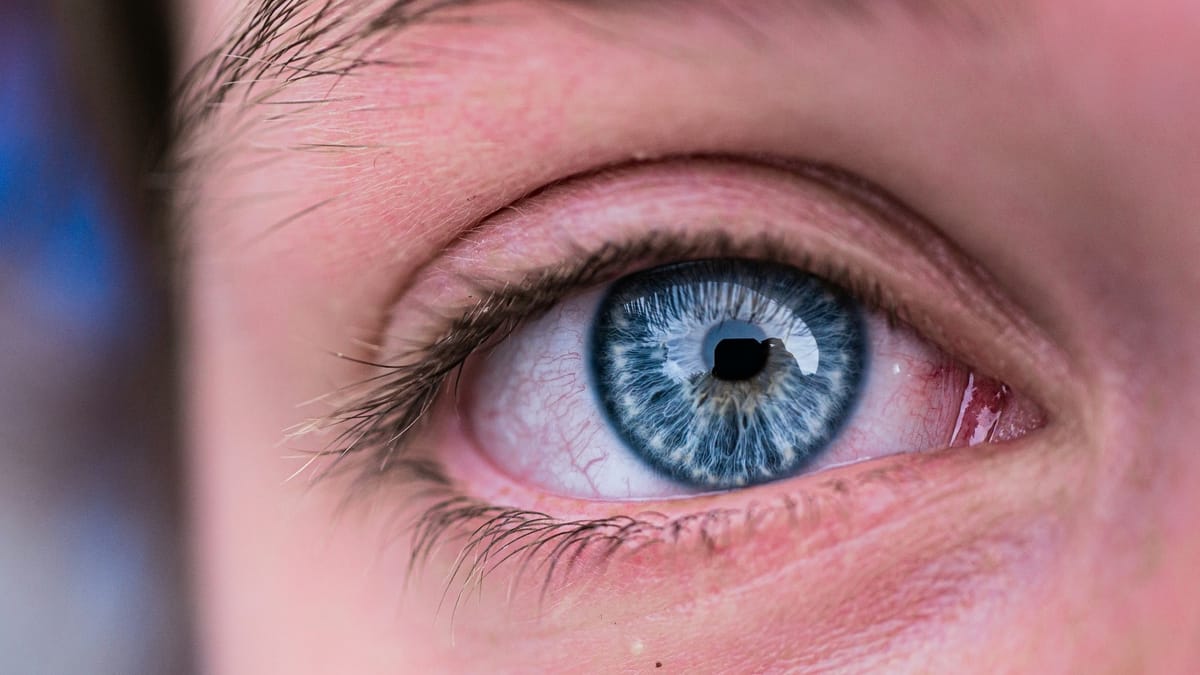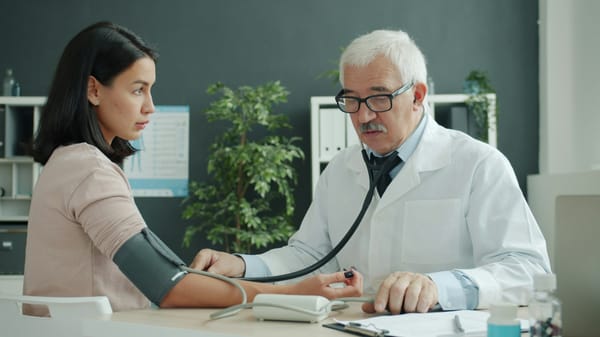Red Light Therapy: Unlock the Science Behind Better Vision and Glowing Skin
Dry eye syndrome is incredibly common, and symptoms like redness, itching, and even burning can make everyday life a lot less comfortable.

Imagine healing your tired eyes and revitalizing your skin with just a simple red light—sounds impossible, but science says it's not only possible, it's powerful
Ever wish you could just shine a light on your tired eyes or dull skin and feel better instantly? Turns out, you actually can—and it’s backed by real science.
Staring at screens all day isn’t doing our eyes any favours. If you’ve ever felt like you’ve got sand in your eyes, struggled with blurry vision, or just can’t shake that tired, scratchy feeling, you’re not alone. Dry eye syndrome is incredibly common, and symptoms like redness, itching, and even burning can make everyday life a lot less comfortable. In more serious cases, ignoring these issues could even threaten your vision, so it’s definitely not something to brush off.
But there’s a simple, non-invasive way to help your eyes (and even your skin) feel and look better: red light therapy. Red light therapy uses specific wavelengths of light to boost your body’s natural healing processes. For your eyes, it can help increase tear production, reduce inflammation, and even support conditions like age-related macular degeneration and diabetic retinopathy. And if you’re worried about wrinkles or dull skin, red light therapy also stimulates collagen production, making your skin look firmer and more radiant.
And there are more benefits to it. Red light therapy can also ramp up your cellular energy (think: more ATP), help muscles recover faster, and even improve your overall mood and endurance. Whether you’re looking to soothe your eyes, give your skin a glow-up, or just feel more energized, this therapy might be the multitasking secret you’ve been searching for. We are going to delve into how it works, what devices you can use at home, and how to get the most out of every session.
Understanding Dry Eye Syndrome: Symptoms You Shouldn’t Ignore
Dry eye syndrome is a surprisingly common condition that affects millions of people worldwide, and yet, it’s often unnoticeable until symptoms start to interfere with daily life. If you’ve ever felt like you’ve got a bit of sand stuck in your eyes or noticed your vision blurring after hours at the computer, you might be experiencing the signs of dry eye. The most common symptom is that unmistakable feeling of dryness or grittiness. Redness and inflammation are also frequent, and they can come with a burning sensation that makes your eyes feel irritated and uncomfortable.
Itching is another classic symptom, and while it might be tempting to rub your eyes for relief, that often just makes things worse. Blurred vision is a regular complaint, especially when reading, driving, or working on a screen for long periods. Many people also find themselves squinting or avoiding bright lights because their eyes suddenly become extra sensitive. This light sensitivity can make everything from a sunny afternoon to the glare of headlights at night feel overwhelming. Eye fatigue is another common issue—your eyes might feel heavy, tired, or just plain worn out, making it tough to focus or get through your day.
Some people notice excess mucus or discharge, which can be yellow or green, and a burning or stinging sensation that ranges from mildly annoying to downright painful. Less commonly, dry eye can cause sharp or dull pain, trigger headaches, or lead to especially blurry vision at night—making nighttime driving a real challenge. Oddly enough, watery eyes can also be a symptom, as your eyes try to make up for dryness by producing more tears (though these tears don’t actually help lubricate the eye). You might even feel like there’s something stuck in your eye, even when there isn’t.
Ignoring these symptoms isn’t just uncomfortable, it can be risky too. Left untreated, dry eye syndrome can lead to vision loss, corneal ulcers, or chronic pain. If any of these symptoms sound familiar, don’t hesitate to reach out to an eye care professional. Early diagnosis and treatment can make a world of difference for your comfort and your long-term eye health.
Recognizing Severe Symptoms of Dry Eye Syndrome: When Should You Seek Help?
Dry eye syndrome is often thought of as a minor annoyance, but, as we have been saying, if left untreated, it can lead to much more serious complications. While many people experience mild symptoms such as dryness, redness, or itching, it’s important to be aware of the more severe manifestations of this condition. Have you ever wondered what could happen if your dry eye symptoms escalate, or how to recognize when it’s time to seek urgent medical attention?
In advanced cases, dry eye syndrome can result in vision loss or even blindness. This may sound alarming, but it highlights just how essential your tear film is for protecting and nourishing the surface of your eye. When your eyes remain persistently dry, the cornea—the clear, outer layer of your eye—becomes vulnerable to damage. This damage can progress to corneal ulcers, which are open sores that not only cause significant pain but also increase the risk of infection and permanent vision impairment. Chronic pain is another severe symptom that can develop, making everyday activities such as reading, working, or even being outdoors extremely uncomfortable. Have you ever experienced eye pain so intense that it disrupts your day-to-day life?
It’s crucial to know when your symptoms require immediate medical attention. If you experience sudden vision loss or a rapid decline in your ability to see, this is a medical emergency. Severe eye pain, especially if it is new or worsening, should never be ignored. Similarly, redness or swelling of the eyes accompanied by discharge or pus could indicate a serious infection that needs prompt treatment. Have you noticed your eyes becoming unusually sensitive to light, to the point where bright environments are unbearable? This heightened sensitivity, especially if it develops suddenly, is another sign that you should consult an eye care professional without delay.
Early intervention can prevent lasting damage and protect your vision. Even if your symptoms seem manageable, regular check-ups with an eye care specialist are essential for monitoring your eye health and catching any complications early.
What Are Lutein and Zeaxanthin? Key Carotenoids for Your Eyes
Let’s talk about two nutrients that don’t always get the spotlight, but absolutely deserve it when it comes to eye health: lutein and zeaxanthin. You might have heard their names tossed around in nutrition blogs or seen them on supplement bottles, but what exactly are they, and why are they so important for your vision?
Lutein and zeaxanthin are carotenoids—plant pigments that give fruits and veggies their bright yellow, orange, and green colors. More specifically, they’re xanthophylls, a special class of carotenoids known for their yellow-orange hue. What’s actually interesting is that your body naturally concentrates these pigments in the macula, the small but mighty part of your retina that’s responsible for sharp, central vision. So, why do your eyes hoard these nutrients? They act as a natural defense system, filtering out harmful blue light from screens and sunlight, and fighting off oxidative stress caused by free radicals.
Research has shown that getting enough lutein and zeaxanthin can seriously lower your risk of age-related macular degeneration (AMD)—a leading cause of vision loss as we get older. They also help protect against cataracts, which is when the lens of your eye gets cloudy and makes everything look foggy. But the perks don’t stop there. These carotenoids can actually improve your visual sharpness, especially if you’re already dealing with eye issues, and they help reduce eye fatigue—something anyone glued to a computer screen can appreciate.
You can find these nutrients in leafy greens like spinach, kale, and collard greens are top sources, but you’ll also get a good dose from eggs (especially the yolks), corn, and squash. If salads aren’t your thing, don’t worry—lutein and zeaxanthin are available as supplements in capsules, tablets, and even eye drops. Most experts recommend aiming for 6–10 mg of lutein and 2–5 mg of zeaxanthin a day for optimal eye protection.
In short, adding more lutein and zeaxanthin to your diet is a simple, science-backed way to keep your eyes healthy and your vision sharp. Are you getting enough of these nutrients in your daily routine?
Mike Started to Care About His Eyes—And It Changed Everything
Mike started to care about his eyes when things got a little out of hand. He’d always been the guy who could spend hours gaming or working on his laptop, barely blinking, thinking a bit of eye strain was just part of the deal. But then the gritty, dry feeling wouldn’t go away, and he found himself squinting at the screen just to read an email. When his eyes got so red and sore that even sunlight made him wince, Mike finally decided it was time to do something about it.
A trip to the eye doctor was a real eye-opener (pun intended). Turns out, Mike had dry eye syndrome—way more common than he thought, and not something to ignore. The doc explained that if Mike kept brushing it off, he could end up with some pretty serious problems, like vision loss or even infections. She suggested adding more foods like spinach and eggs to his diet for the lutein and zeaxanthin, and even mentioned red light therapy as a way to help his eyes recover.
Mike took the advice to heart. He started eating better, tried out red light therapy, and made regular eye checkups part of his routine. Now, his eyes feel better, his vision’s sharper, and he’s way more aware of how important it is to look after his peepers.
Your Top Questions Answered
- What is dry eye syndrome, and how common is it?
Dry eye syndrome is a widespread condition affecting millions globally, characterised by insufficient lubrication of the eyes.
- What are the most common symptoms of dry eye syndrome?
Symptoms include dryness, grittiness, redness, itching, blurred vision, sensitivity to light, eye fatigue, mucus or discharge, and a burning or stinging sensation.
- Are there less common or severe symptoms of dry eye syndrome?
Yes, less common symptoms include eye pain, headaches, blurred vision at night, watery eyes, and the sensation of a foreign body in the eye. Severe symptoms can include vision loss, corneal ulcers, and chronic pain.
- When should someone seek immediate medical attention for dry eye symptoms?
If you experience sudden vision loss, severe eye pain, redness or swelling with discharge, or increased sensitivity to light, seek medical help right away.
- What are lutein and zeaxanthin, and where are they found?
Lutein and zeaxanthin are carotenoids (plant pigments) found in high concentrations in leafy green vegetables, eggs, corn, and squash.
- How do lutein and zeaxanthin benefit eye health?
They help reduce the risk of age-related macular degeneration (AMD) and cataracts, protect the macula from blue light and oxidative stress, improve visual acuity, and reduce eye fatigue.
- How do lutein and zeaxanthin work in the body?
They absorb blue light, reduce oxidative stress with their antioxidant properties, and help protect the retina from inflammation and damage.
- What are the recommended daily intakes for lutein and zeaxanthin?
Experts generally recommend 6–10 mg of lutein and 2–5 mg of zeaxanthin per day for optimal eye health.
- What is red light therapy, and how does it help eye health?
Red light therapy uses specific wavelengths to improve visual acuity, increase tear production, reduce inflammation, and support conditions like AMD, diabetic retinopathy, and dry eye syndrome.
- Can red light therapy benefit other aspects of health besides the eyes?
Yes, it can boost ATP production, improve skin health and collagen production, support wound healing, and aid in muscle recovery and overall cellular health.
Key Takeaways
- Dry Eye Syndrome Is Widespread: Millions of people worldwide experience dry eye syndrome, with symptoms ranging from mild discomfort to severe pain and vision problems.
- Recognize the Symptoms Early: Common signs include dryness, redness, itching, blurred vision, sensitivity to light, eye fatigue, mucus or discharge, and a burning or stinging sensation.
- Serious Complications Can Develop: If left untreated, dry eye syndrome can lead to severe issues like vision loss, corneal ulcers, and chronic pain that can impact daily life.
- Know When to Seek Help: Sudden vision loss, severe eye pain, redness or swelling with discharge, and increased light sensitivity are all reasons to seek immediate medical attention.
- Lutein and Zeaxanthin Are Essential Nutrients: These carotenoids, found in leafy greens, eggs, corn, and squash, play a crucial role in protecting your eyes from damage.
- Protect Your Macula and Retina: Lutein and zeaxanthin help shield the macula from blue light and oxidative stress, reducing the risk of age-related macular degeneration and cataracts.
- Support Visual Acuity and Comfort: Regular intake of lutein and zeaxanthin can improve visual sharpness and reduce eye fatigue, especially for those who spend lots of time on screens.
- Red Light Therapy Offers Multiple Benefits: This therapy can help manage dry eye syndrome, boost tear production, reduce inflammation, and support recovery from eye conditions.
- Consider Nutrition and Technology Together: Combining a diet rich in eye-healthy nutrients with red light therapy and regular eye checkups can optimize your long-term eye health.
- Be Proactive About Eye Care: Don’t ignore early warning signs—prioritize your eye health with protective habits, proper nutrition, and timely professional care to maintain clear vision for years to come.
References
https://www.aao.org/eye-health/diseases/dry-eye-syndrome
https://www.mayoclinic.org/diseases-conditions/dry-eyes/symptoms-causes/syc-20371863
https://www.nei.nih.gov/learn-about-eye-health/eye-conditions-and-diseases/dry-eye
https://www.health.harvard.edu/staying-healthy/nutrition-and-eye-health
https://www.aoa.org/healthy-eyes/caring-for-your-eyes/nutrition/lutein-zeaxanthin
https://nei.nih.gov/research/clinical-trials/age-related-eye-disease-study-2-areds2
https://www.ophthalmologytimes.com/view/red-light-therapy-dry-eye
https://www.mdpi.com/2077-0383/9/10/3170
https://www.frontiersin.org/articles/10.3389/fmed.2021.676629/full
https://ods.od.nih.gov/factsheets/LuteinZeaxanthin-Consumer/
https://my.clevelandclinic.org/health/diseases/8589-dry-eyes
https://bjo.bmj.com/content/100/2/134
https://www.reviewofoptometry.com/article/photobiomodulation-the-science-and-promise-of-red-light
This article was written by Ariadna Paniagua, an experienced writer and editor for several institutions, papers, and websites.




